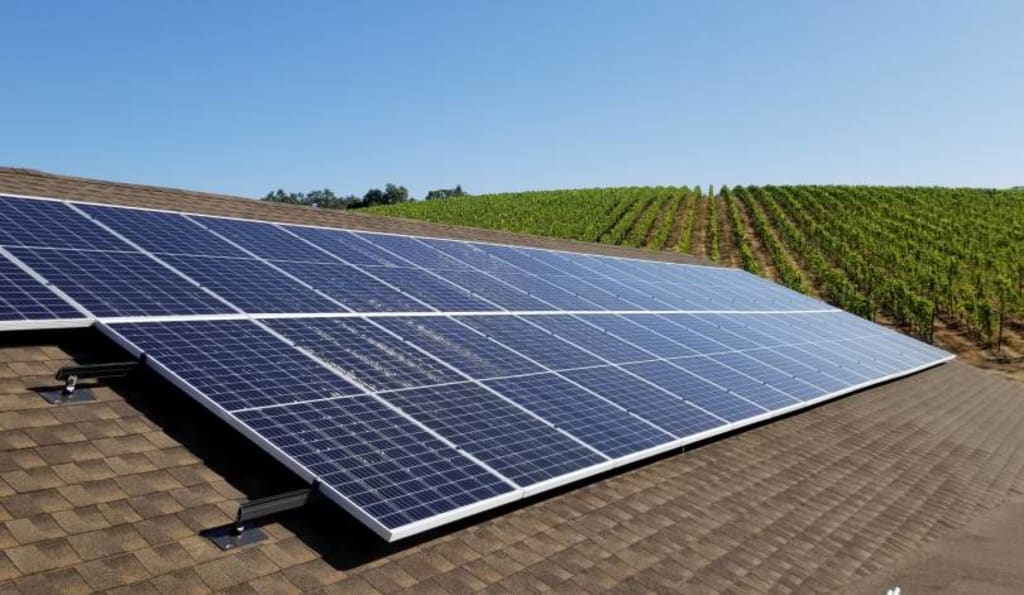Latest Solar Panel Technology in India 2024
Advancements and Innovations Driving Solar Panel Technology in India

India, a country with abundant sunshine, is continually advancing in solar panel technology to harness its vast solar energy potential. In 2024, the latest advancements in solar panel technology in India are revolutionizing the renewable energy sector, making solar power more efficient, affordable, and accessible.
1. Bifacial Solar Panels
Bifacial solar panels are becoming increasingly popular in India. Unlike traditional solar panels that capture sunlight only on one side, bifacial solar panels can absorb light from both sides. This design significantly boosts energy output, especially in areas with reflective surfaces like sand or snow. The increased efficiency of bifacial panels is making them an attractive option for both commercial and residential installations.
2. Perovskite Solar Cells
Perovskite solar cells are at the forefront of cutting-edge solar technology. These cells are known for their high efficiency and low production costs. Research and development in India have focused on improving the stability and durability of perovskite cells, making them more viable for large-scale deployment. With their potential to surpass the efficiency of traditional silicon-based panels, perovskite cells are poised to revolutionize the solar industry.
3. Floating Solar Farms
Floating solar farms, also known as floatovoltaics, are gaining traction in India. These solar arrays are installed on bodies of water, such as lakes, reservoirs, and ponds. Floating solar farms not only save valuable land space but also benefit from the cooling effect of water, which enhances the efficiency of the panels. The Indian government has been promoting this technology to maximize solar energy production without compromising agricultural or urban land.
4. Building-Integrated Photovoltaics (BIPV)
Building-Integrated Photovoltaics (BIPV) is another innovative approach making waves in India. BIPV involves integrating solar panels directly into building materials, such as windows, facades, and roofs. This technology is particularly appealing for urban areas where space for traditional solar panels is limited. BIPV systems offer dual functionality, serving as both a building material and a source of renewable energy, thereby reducing overall construction costs and energy consumption.
5. Solar Tracking Systems
Solar tracking systems have become more sophisticated and affordable, enhancing the efficiency of solar installations across India. These systems adjust the orientation of solar panels throughout the day to follow the sun's path, maximizing energy capture. Modern solar trackers are equipped with advanced sensors and algorithms, ensuring optimal performance even under varying weather conditions.
6. Advanced Energy Storage Solutions
To address the intermittency of solar power, India is investing in advanced energy storage solutions. Lithium-ion batteries, flow batteries, and other innovative storage technologies are being integrated with solar installations to provide a reliable and consistent power supply. These storage systems are crucial for ensuring energy availability during cloudy days and nighttime, thereby enhancing the overall stability of the grid.
7. Smart Solar Inverters
Smart solar inverters are playing a key role in optimizing solar energy systems. These inverters are equipped with artificial intelligence (AI) and Internet of Things (IoT) capabilities, allowing for real-time monitoring and management of solar power generation. Smart inverters can dynamically adjust the energy output, predict maintenance needs, and integrate seamlessly with the grid, making solar energy systems more efficient and user-friendly.
8. Recycling and Sustainable Manufacturing
As the solar industry grows, the need for sustainable manufacturing and recycling of solar panels is becoming more critical. Indian companies are investing in technologies to recycle old and damaged solar panels, recovering valuable materials and reducing environmental impact. Sustainable manufacturing practices are also being adopted to minimize the carbon footprint of new solar panel production.
Conclusion
India's solar industry is experiencing rapid technological advancements in 2024, positioning the country as a leader in renewable energy. The adoption of bifacial panels, perovskite cells, floating solar farms, BIPV, advanced tracking systems, energy storage solutions, smart inverters, and sustainable practices are collectively driving the growth of solar power. These innovations are not only making solar energy more efficient and affordable but also ensuring a greener and more sustainable future for India.
About the Creator
Bluebird Solar
With a 40-year-old reputed brand name, Bluebird Solar is one of India's leading solar panel manufacturers.
Enjoyed the story? Support the Creator.
Subscribe for free to receive all their stories in your feed. You could also pledge your support or give them a one-off tip, letting them know you appreciate their work.






Comments (1)
Thank you for the interesting and delicious content. Follow my story now.